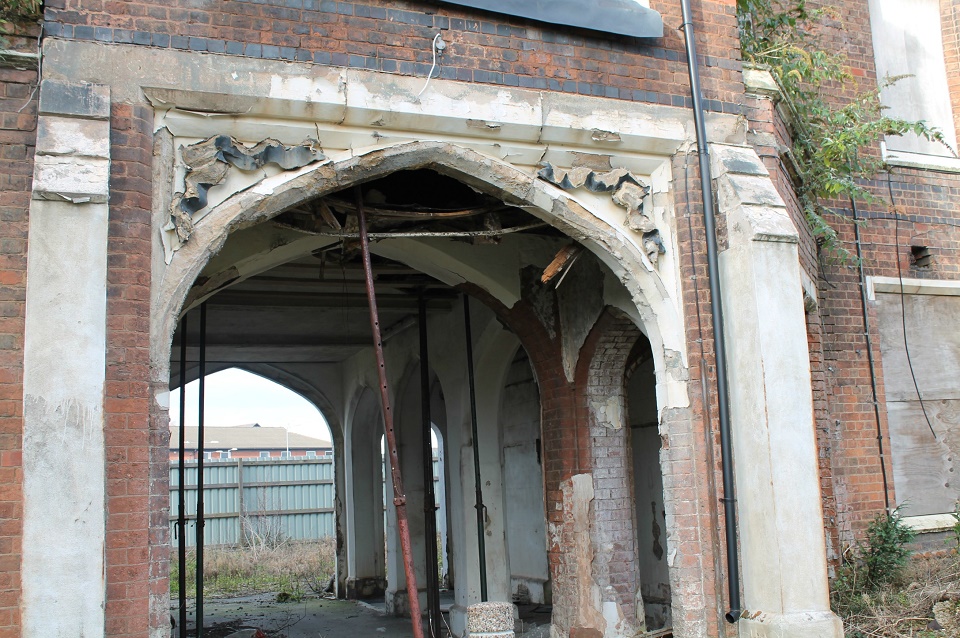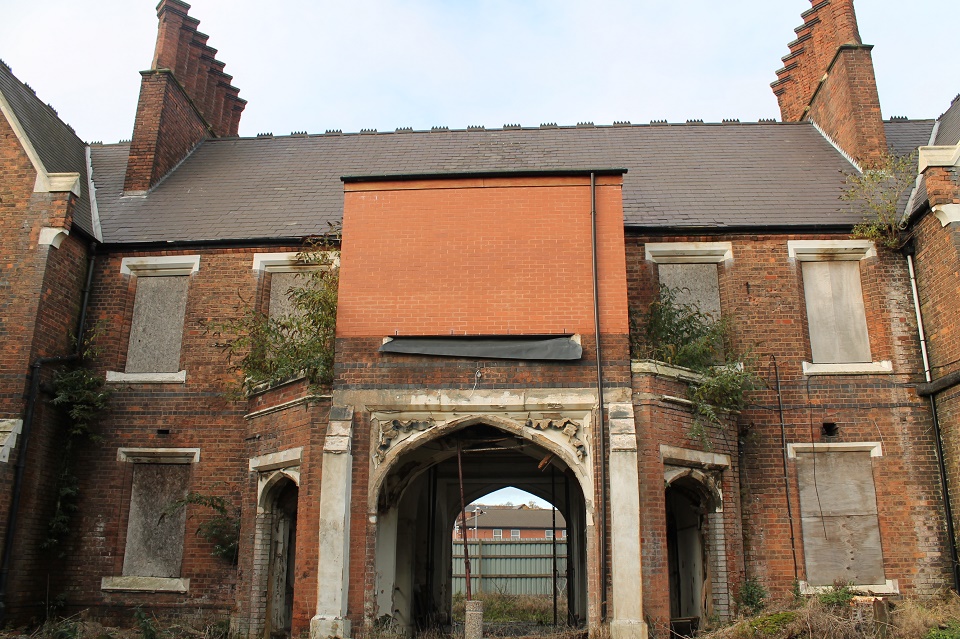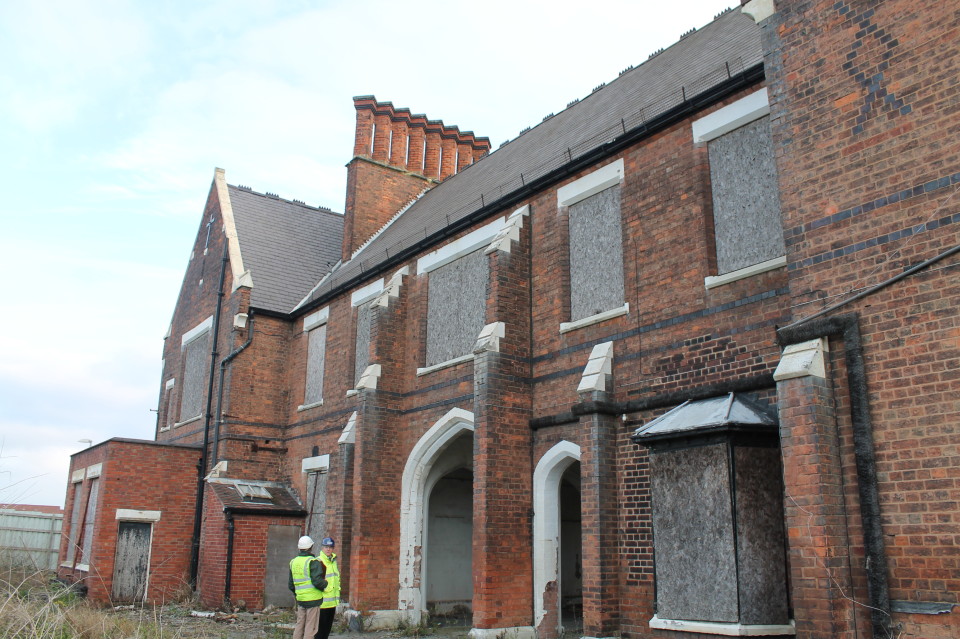Archway of Tears
BCT was commissioned by the Sandwell and West Birmingham NHS Trust to
procure funding and carry out an Options Appraisal. Grants were obtained
from Successful Neighbourhoods Fund, Urban Living and the NHS Trust and
the report was completed in 2010.
The Archway of Tears was completed in 1852 and formed the entrance to the former Birmingham Union Workhouse. It was here that people driven by poverty and circumstance arrived to be assessed for entry to the workhouse. Its evocative name reflects the sorrow suffered by new arrivals as families were split by gender and age to relevant living and working areas. Despite its extraordinarily moving social history, the building was turned down for listing which could have offered it a degree of protection. Without the context of the rest of the Workhouse building, it was felt that it did not meet the listing criteria although Historic England did acknowledge that it was “of clear local significance for its place in the social history of the area.”
BCT went back to look at the Archway in 2013. It was pleased to learn of the continued enthusiasm of the NHS Trust to find a sustainable future for the Archway and to hear about the work being done to attempt to minimise further deterioration of the building.
Unfortunately our hopes that it could have a new life as a community hub were not to be. Changes to NHS priorities meant that following the relocation of the hospital in 2019 there was no convinced use for the site and regrettably the building was demolished.
You can find more information on the demolition, including images, here.
Have a look at Ted Rudge’s website to read stories about the Workhouse.
We published a blog about the Archway in 2010 and received various message of support. People also shared their memories and family connections to the workhouse:
Cecilia Morrall
Myself, my older brothers and sister, and my younger sister all have connections with the city hospital site as we were all born there in the 50’s and 70′s. I have recently found out through tracing my family history on the Morrall side that my great great grandmother Mary Ann Morrall was admitted to the work house infirmary in 1901 due to the fact that there was nobody to look after her after her husband Edward Morrall died, and she was also of feeble mind.
I think it is a crying shame that the archway of tears could possibly be demolished and I think every effort should be made to try and save this wonderful historic building for future generations and also for the memory of the poor souls who were there through no fault of their own.
Jayne Cassey
My great great great grandfather Nathaniel Felkin served 15 years in the Royal Marines after seeing action in the French Wars and left in 1816. On his return home it seems that he was an inmate of the old Workhouse in Lichfield Street and was a stone breaker. By 1823 I have found him in the records as Superintendent of Stone Breakers earning 20 shillings a week. His wife Sarah was Laundress of the infant department.
In 1848 he was directed by the board of guardians and Mr JJ Bateman to gather 7 of the parish men to make holes in the field at Birmingham Heath and assist Mr Bateman the architect to ascertain the fitness of the land for the building of the ‘New Workhouse’ in Western Road.
The ‘New Workhouse’ was opened in 1852 and Nathaniel was appointed the Superintendent of Pauper Labour and assisted Mr Bateman in such jobs as finishing the drainage systems.
From the records I found and read about Nathaniel he sounded a very fair and caring man. He put it to the Guardians in 1849 that the indoor and outdoor paupers do cease work on the following Thursday as the day has been appointed a day of great thanksgiving on account of the cessation of cholera in this county. I have many stories showing he was caring probably due to the fact that he used to be an inmate himself.
Nathaniel worked at the Workhouse well into his 80’s as the Guardians were happy for him to stay on as he ‘rendered good service’. He died in 1864 aged 86 of Senile Decay. The Guardians placed an obituary in the Birmingham Daily Gazette which read ……….
Felkin – on the 16th inst.in the 86th year of his age Nathaniel Felkin, who for nearly 40 years filled the office of Superintendent of Outdoor Labour in the parish of Birmingham in which he rendered good service to the rate payers. He for several years served as a marine in the Royal Navy during the reign of George the Third, and was present at the Battle of Trafalgar and Several other engagements by sea during the French War.
Nathaniel was buried in All Saints Church just around the corner from the workhouse, it is not clear if he had a headstone or not but the church yard was cleared in the 1970’s and now is a housing estate which upset me as there is nothing to say that this great man who served his country all his life ever existed.
I am very proud to be his great great great grandaughter and to have found out about his life.





